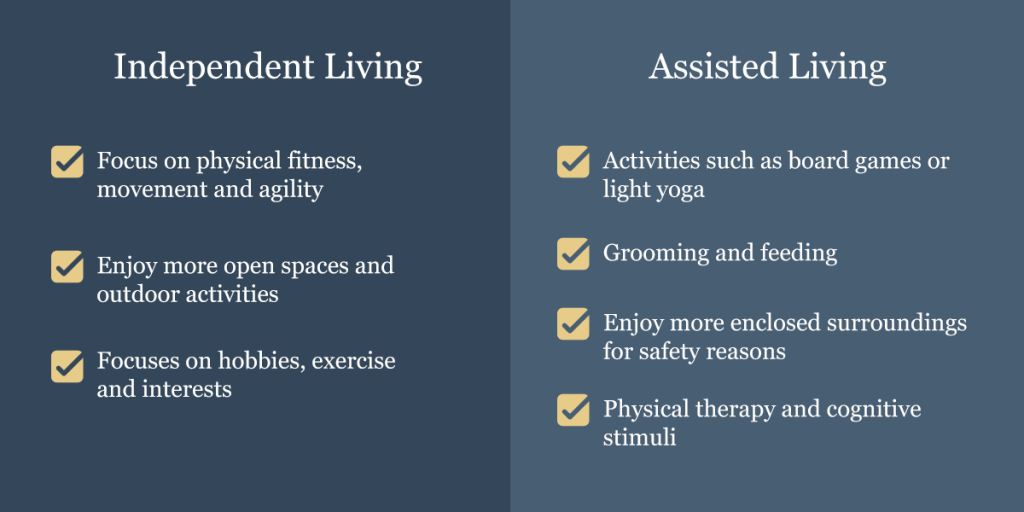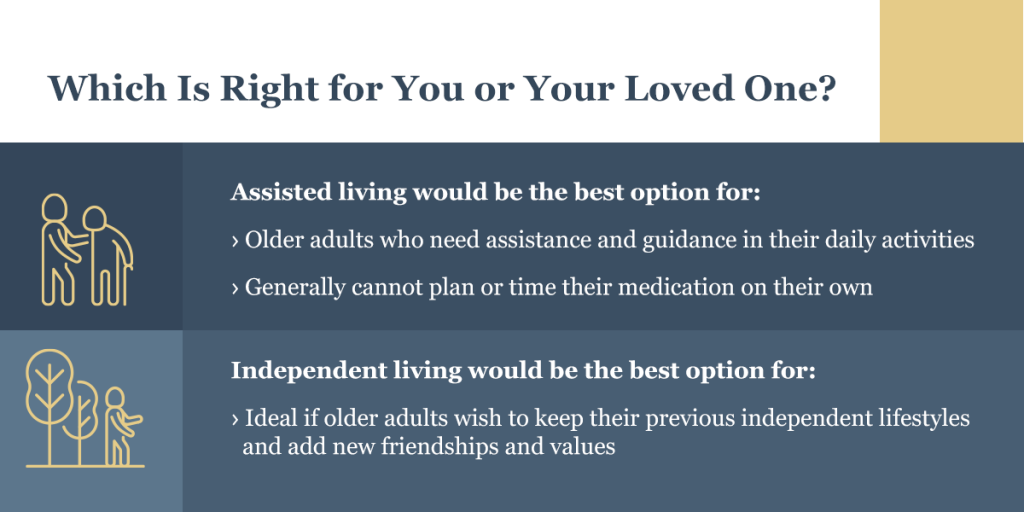
As we grow older, our lives change, and the daily errands and chores we used to enjoy may become too much. Or we’re constantly thinking about our finances and realize that the way we used to live isn’t affordable anymore.
You or your loved one may find yourselves in a situation where it’s time to think about living in a supportive, caring community. Exploring new options and finding the perfect new senior home can be a wonderful experience. Understand the difference between independent and assisted living and make the right decision for you or a loved one.
Contents:
Independent living means maintaining your independence while thriving in a social living environment. Many older adults can still go about their day-to-day lives and interact with family members and friends, yet choose to stay in a community that fosters social and spiritual growth.
If keeping your family home has become too expensive or living alone is not an option, the best alternative would be to choose independent living because you or your loved one won’t need to forgo any autonomy. There are multiple factors that seniors can look forward to when they decide to live independently, such as:
Independent living is a great option for older adults who are still able to live their lives without needing special care. This lifestyle fosters and encourages growth and helps you or your loved one thrive.
Older adults who choose assisted living need additional help in their day-to-day lives. Usually, these are people who need assistance with medication and other daily activities such as using the bathroom, washing and eating. Though some form of independence is often encouraged in assisted living conditions, these facilities provide the necessary support to ensure the safety and comfort of older adults.
People might choose assisted living for a variety of reasons, including:
Other signs that an older adult might benefit from assistance are frequent trips to the hospital due to injuries sustained at home from falls and accidents.
Sometimes, the need for independent living or assisted living may need clarification. Other times, you or your loved one will know that having assistance in daily life is the best option. Which begs the question, what is the core difference between the two?

There are distinct differences between maintaining independence and having additional support. Here are guidelines that we can explore, which will aid in identifying the main differences:

Making the right decision between independent living or assisted living can be simple. It comes down to how much support you or your loved one needs.
For older adults who need assistance and guidance in their daily activities and who generally cannot plan or time their medication on their own, assisted living would be the best option for their safety and comfort.
Seniors who want an independent lifestyle and wish to partake in moderately active physical activities and hobbies will thrive in an independent living situation. Here, autonomy and a sense of self are encouraged and valued. This arrangement will be ideal if older adults wish to keep their previous independent lifestyles and add new friendships and values.
Maintaining a fun and vibrant lifestyle through retirement is entirely possible and encouraged. We at Elm Terrace know the importance of fostering friendships and a healthy lifestyle while still enjoying the peace that comes with retirement.
Whether you or your loved one seek to enjoy independent living at a facility with a soft heart for the community or need assisted living with dignity and luxury, Elm Terrace has a place for you. Feel free to contact us and explore our independent living and assisted living options, or schedule a free lunch and tour to visit our senior living community!